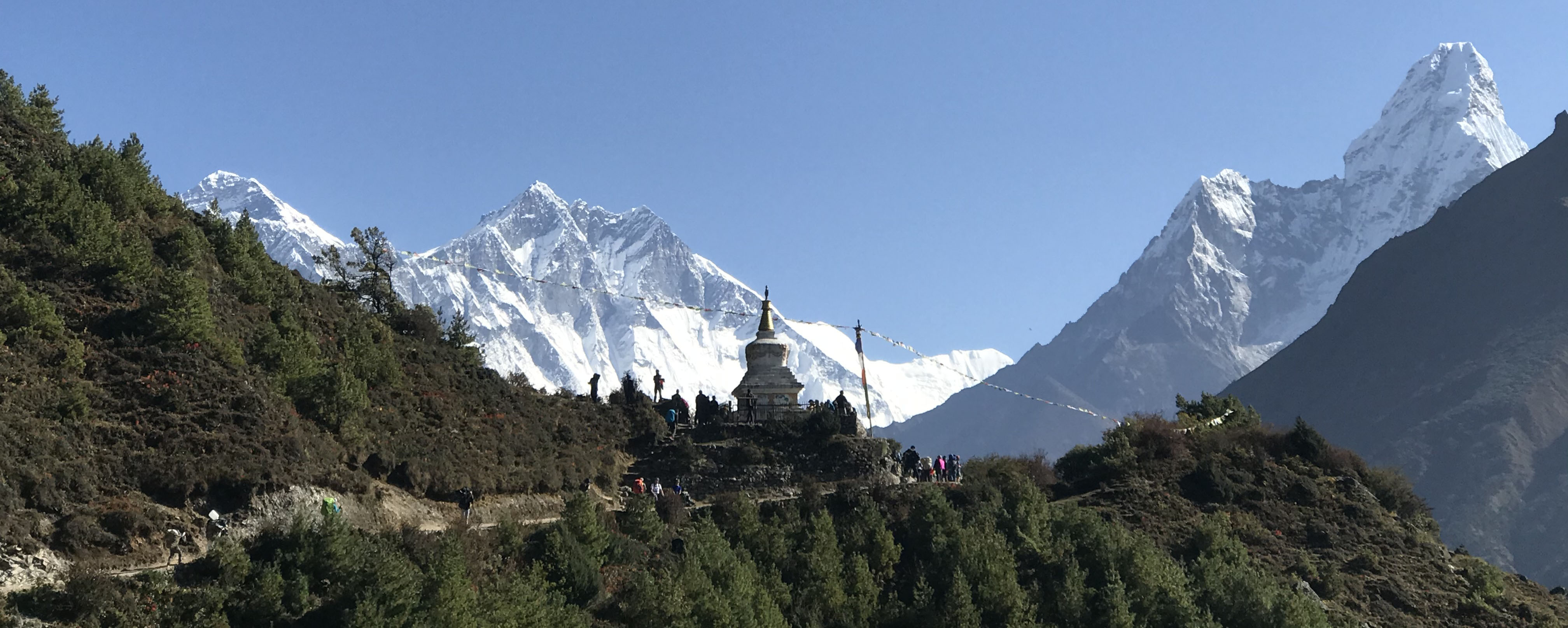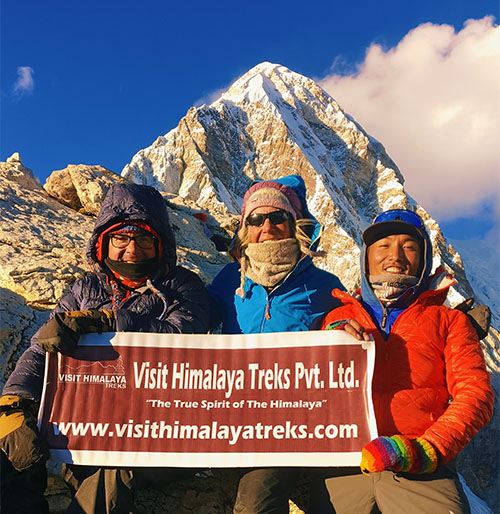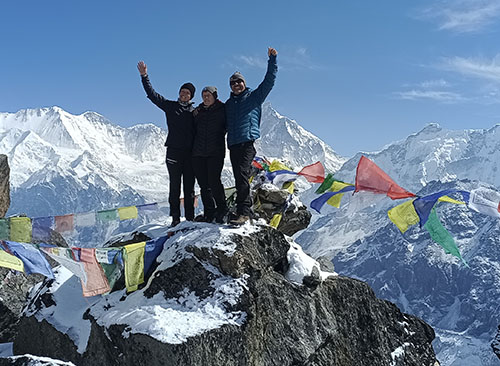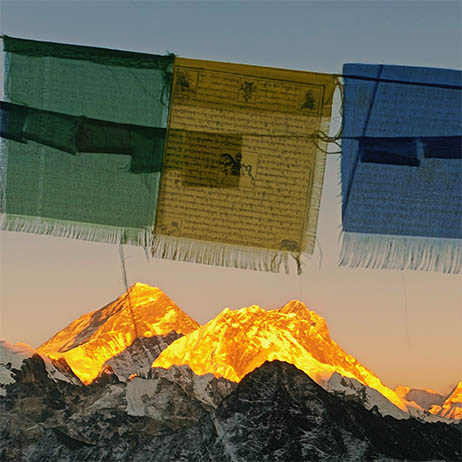The Everest Base Camp Trek lets you enjoy the classic Himalayan adventure at the foot of the world's highest mountain. On the route, get yourself ready to witness the magical aura of the Khumbu Region. Each year, Trekkers from every corner of the world manage to escape to Nepal for the opportunity to witness the amazing beauty of Mount Everest. Planning it right is where your safety lies, along with an unforgettable trekking adventure. You’ll gear up with any detail from selecting to packing, we have it all laid out for you. Over this route, you can expect to find wide-eyed mountain views, tea houses, suspension bridges, and blooming rhododendron forests.
Along with that, learning about altitude sickness, acclimatization, permits, food & accommodation needs, etc, is necessary when planning to embark on your Everest Base Camp Tour. Find out where to start with this guide. We will give you the basic idea in a step-by-step manner so you can step ahead on the trail confidently before planning your first one. Let’s learn the basic ways to be ready for this incredible Himalayan adventure of the Classic EBC Trek.
Why the Everest Base Camp Trek is Worth It.
The Everest Base Camp Trek 14-Day is the most popular in Nepal. Cold places, semi-deserts, arid mountains, and much rainy places like Solukhumbu, where it will rain, then snow again. Trekking without any question through the awe-inspiring valleys with the World’s Highest Mountain Peaks, including Mt. Everest (8,848.86 m), Lhotse, Nuptse, and Ama Dablam, is a lifetime experience. And every twist and turn during the EBC Trek will unveil another picture postcard mountain scene. The spiritual side of this Trek is extremely rewarding. Nightly stops at traditional Sherpa villages like Namche Bazaar, Tengboche, and Dingboche also help to get an insight into the mountain life. Toss in a couple of thousand-year-old monasteries and a flutter of prayer flags in the wind to enhance your spirituality.
In the evenings, tea houses become the main spot to get together and share stories. At these teahouses, you can sit, sip your hot tea and coffee, and chat with friendly trekkers from around the world. Likewise, the moment you reach Base Camp, you can stand at the foot of the highest mountain on Earth. It is the adventure we remember, not the finish line, but the journey, people, struggle, and the memories to take back home. EBC Trek is a beautiful reminder of how puny nature can make us humans feel, and the progress we have made until now, in terms of physical and mental strength. For many of us, this trek can be a life-changing and thoughtful discovery.
How to Prepare for the Everest Base Camp Trek.
Gear preparation is the first part of the Planning for the EBC trek. You do not need to be a professional trekker, but a basic fitness level is good to have. Start training about 4-6 weeks out with walking, hiking or stair climbing. Accountability of regular walking and a light backpack will increase stamina. Make sure to pack thermal wear, fleece jacket, waterproof outer shell, gloves, trekking pants, wool socks, good down jacket. You will also require comfortable trekking boots. Carry a water bottle, purifying tablets, sunscreen, lip balm, and a headlamp. A sleeping bag walking pole is essential.
The acclimatization days are very important on EBC Treks. The majority of the itineraries separate the acclimatization days in Namche Bazaar and Dingboche. These rest days are essential so you can avoid altitude sickness. Equally important is to get your mind ready. This moderately challenging trek generally takes more than 12 days based on different itineraries and includes some tough stretches. The reward is worth the effort. Drink plenty of water, eat well, and sleep properly.
Hiring a guide and porter can be very useful as they not only carry your bags but also have knowledge of the surroundings, manage logistics, and motivate you. Last but not least, get yourself a travel insurance with high-altitude coverage. With the right frame of mind and preparations in place, the EBC trek is bound to be a memorable trek of your lifetime.
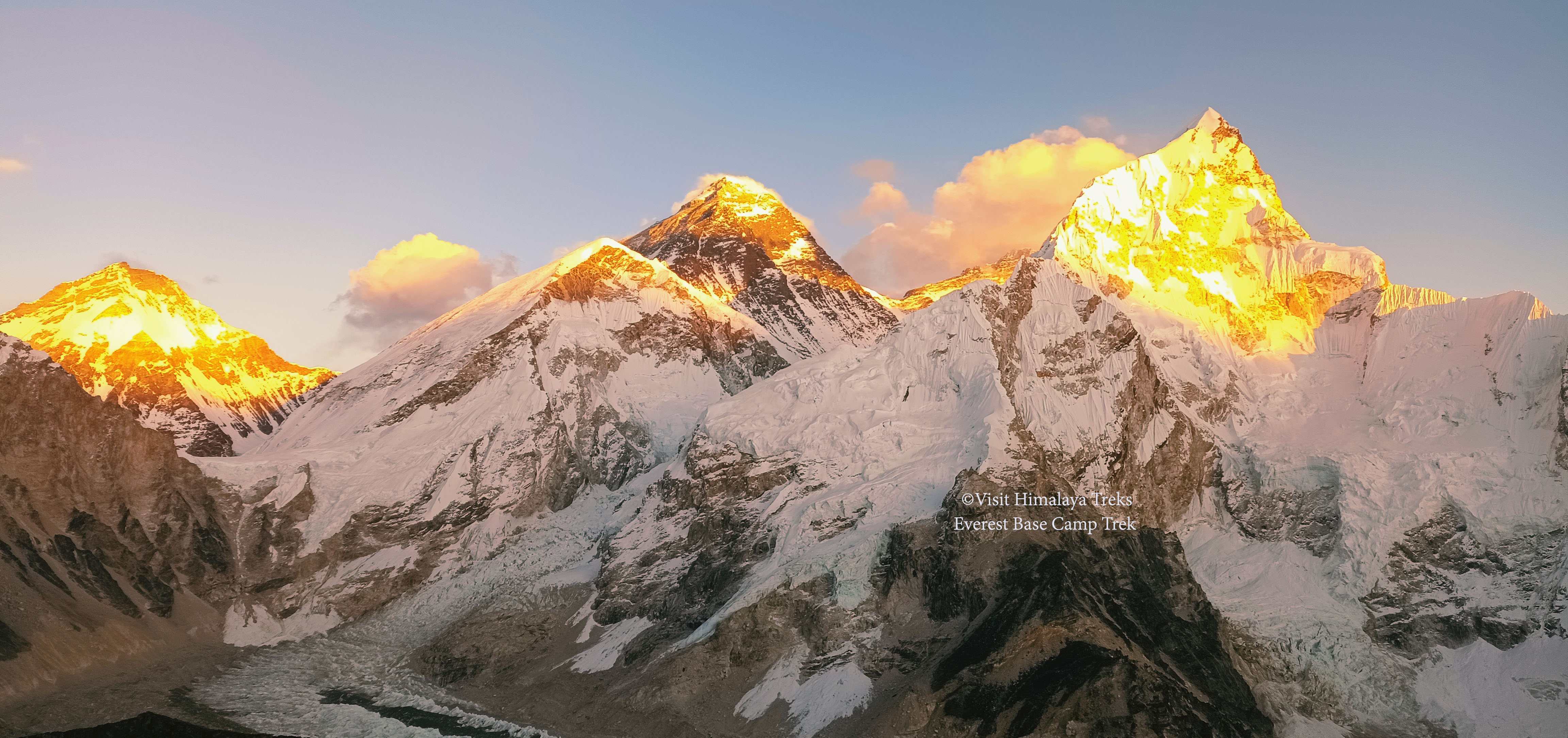
Sunset View over Everest from Kala Patthar View Point.
Different Routes to Everest Base Camp Trek.
The EBC Trek is an ambition for trekkers from all over the world, and the beauty of it lies in the various routes that approach the base of the highest mountain on Earth. You can just pick many different Everest Base Camp Routes as per your preferences. Likewise, the regular EBC Trek is through the traditional route to the Base Camp, which is the most common, taking you through historic Sherpa villages and some of the most beautiful views of Everest, Lhotse, and Ama Dablam.
The EBC trek of 17 Days is for those who want extra days to soak up the vibe of the snowy Khumbu Region. Likewise, trekkers with limited time but wanting to experience the essence of the Khumbu region can go on 14 Day EBC trek. On the other hand, thrill-seekers may prefer the Gokyo Lakes and Cho La Pass route for a bit of adventure in their trek with the high-altitude beauty, plus tranquil glacial lakes.
Moreover, one can embark on the Everest Three High Pass Trek for a real Himalayan challenge. It is best in the lap of Everest for true mountaineers. Alternatively, you can hike up to base camp and take a helicopter back from Gorakshep to complete it with a touch of class.
Regular Route of EBC Trek.
EBC Trek along the normal route is a tried-and-true classic that presents a wonderful mix of natural splendour, culture, and adventure. Starting off with an awe-inspiringly, beautiful mountain flight from Kathmandu to Lukla, the gateway to Everest. The trail then makes its way through the lovely riverside gem of Phakding village before ascending to the lively Sherpa capital of Namche Bazaar in the Khumbu region.
And on the way up, you'll pass Tengboche Monastery, an important cultural site, as well as grand close-up views of Ama Dablam, Thamserku, and Kangtega. After that comes Dingboche, a single-track village known for wide open valleys and acclimatization stops. Next, the trail takes you through Lobuche and then into Gorakshep. At Gorakshep, most of the trekkers stay and take in the beauty of the Everest region before heading to Everest Base Camp at 5,364m. A sunrise hike to Kala Patthar gets you the ultimate view of Mount Everest as seen from the perfect panoramic angle.
Upon your return, you would go through Pheriche and back along the trail through Tengboche, Kyangjuma, Namche, and Monjo to finally reach Lukla again. Suspension bridges, yak caravans, ancient stupas, and lovely teahouse hospitality line the way. Ideal for novice trekkers, you get all the experience of Everest without any technical climbing.
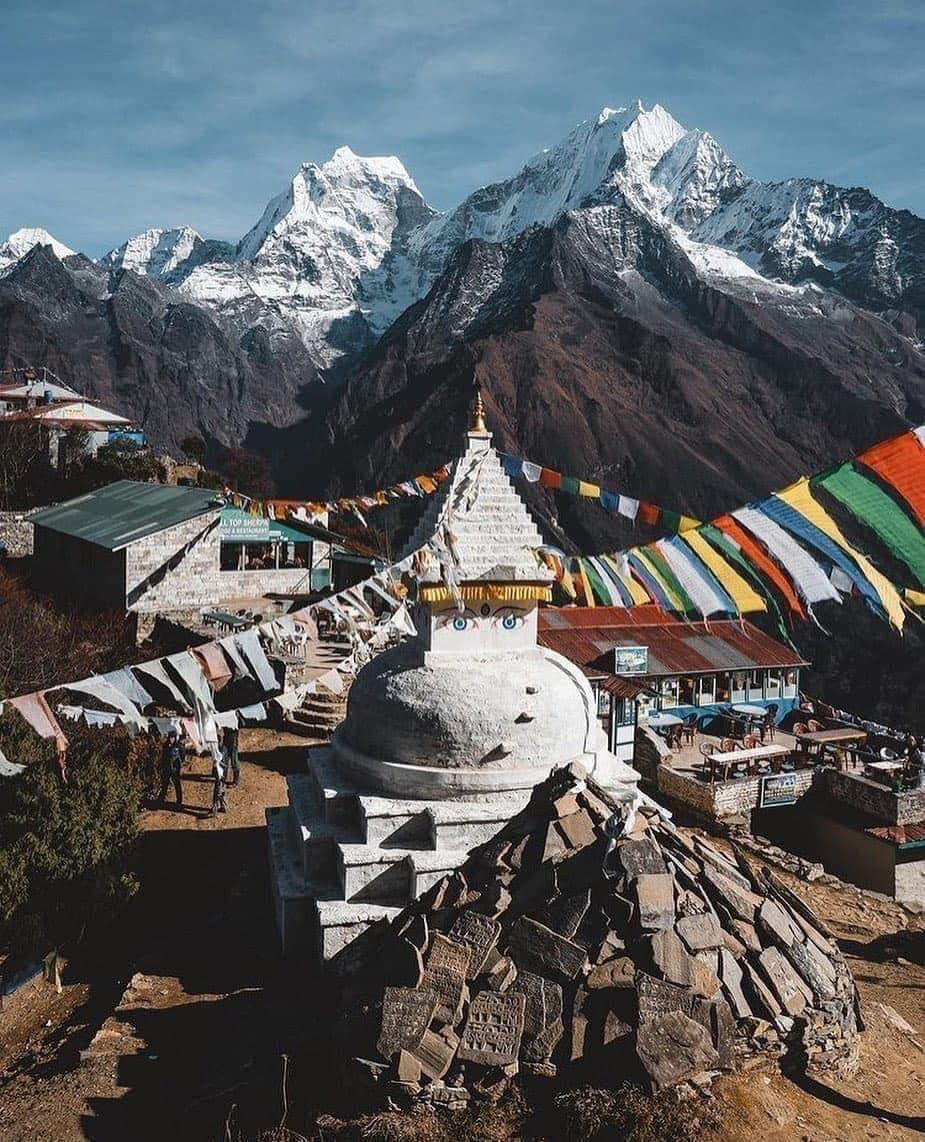
Buddhist Stupa and surrounding view from Mongla Danda.
EBC Trek via Mongla Danda.
At around 3,900 meters, just off the beaten Namche Bazaar to Phortse Village trail lies the breathtakingly high Mongla Danda, one of the most spectacular corners EBC Trek. Just above the Dudh Koshi Valley, this beautiful secret unveils one of the finest sights of Ama Dablam, and, commonly, trekkers miss this fabulous view by sticking to their regular route.
While following the route from Namche Bazaar, the trail goes toward kyangjuma and turns off at Mongla Hill. The moderate tree-covered valley of rhododendrons, and less overcrowded, the serene trail goes through Gokyo Valley and Phortse, a Sherpa village set within the frame of the terraced paddy fields and old traditional houses. The trail continues ascending gently to Upper Pangboche, a Tranquil village representing Tibetan culture, which looks onto the monasteries with stunning views.
Regain the classic Everest trail at Upper Pangboche. The regular EBC trek will then take you through Dingboche, Lobuche, Gorakshep, and eventually reach Everest Base Camp. In the same way, a hike up to Kala Patthar promises a sunrise you will never forget. Likewise, descend through Pheriche, Tengboche, and Namche on the return. Few operators incorporate the Mongla Pass trails in their itineraries to Everest Base Camp, but it’s a trail worth a detour. With Panoramic Himalayan vistas, tranquil trails, and never-to-be-forgotten views of Ama Dablam, Mongla Pass is one of the hidden gems in the Everest Region.
Everest Base Camp 17 Days Route.
If you are the type who likes to take their time and enjoy all the steps along your adventure, then the EBC 17 Days Trek is the right trek for you. But it is not just the base of Mount Everest that you are gunning for, but you are living the adventure for 17 days, living the adventure every day. It all starts with a mountain flight to Lukla and then leads you down through tranquil riverside trails and vibrant towns such as Phakding.
The heart of the Sherpa people, Namche Bazaar, will be waiting for you. Crossing the vintage Sherpa town, pass through the village of Khumjung, and visit the Everest View Hotel. The Everest View hotel blesses your eyes with an amazing panorama of Ama Dablam, Everest, and Lhotse. The trek continues to the evergreen pine forests full of endangered animals such as musk deer, Himalayan Tahr, and possibly even the national birds of Nepal, the Danphe. On the way to Tengboche, the site of the famous Tengboche Monastery and its spectacular views of Ama Dablam, Lhotse, and Everest add to the beauty of the Trek.
Walking on towards Debuche, Pangboche, and Dingboche, you cross forests of pine and yak pastures. Experience acclimatization days with potential for Nangkartshang Hill or Chukhung Valley walks. The trail now follows Thukla, Lobuche, and finally Gorakshep, where you climb Kala Patthar (5545m) for the sunrise view. After that, you head back to Lukla after visiting EBC with colourful memories.
Everest Base Camp Trek 14 Days Route.
This 14-day EBC trek is the best option for anyone seeking the full Everest experience, but it is limited in time. Not as lengthy as the 17-day trek, this omits some acclimatization hikes and cultural excursions to realistically aim for just making it to Everest Base Camp. Lukla opens the door for your EBC Trek 14 Days following Phakding, Namche Bazaar, and Tengboche.
The beautiful Sherpa villages of Debuche, Pangboche, and Dingboche line the trail with an impressive view of Ama Dablam, Everest, and Lhotse. Dark pine forests, rough trails, and prayer flags will mark your way.
The trek continues to Lobuche and then Gorakshep, from where you will hike to EBC and then Kala Patthar for a golden sunrise. After getting the satisfying panorama of the Everest region, you will then hit the same route through Pheriche, Tengboche, and Namche on your way back to Lukla. This fast-paced trek of 14 Days still exposes you to Sherpa culture, the world's highest mountain views, and monasteries in just a few days, making it ideal for fit trekkers with limited time.
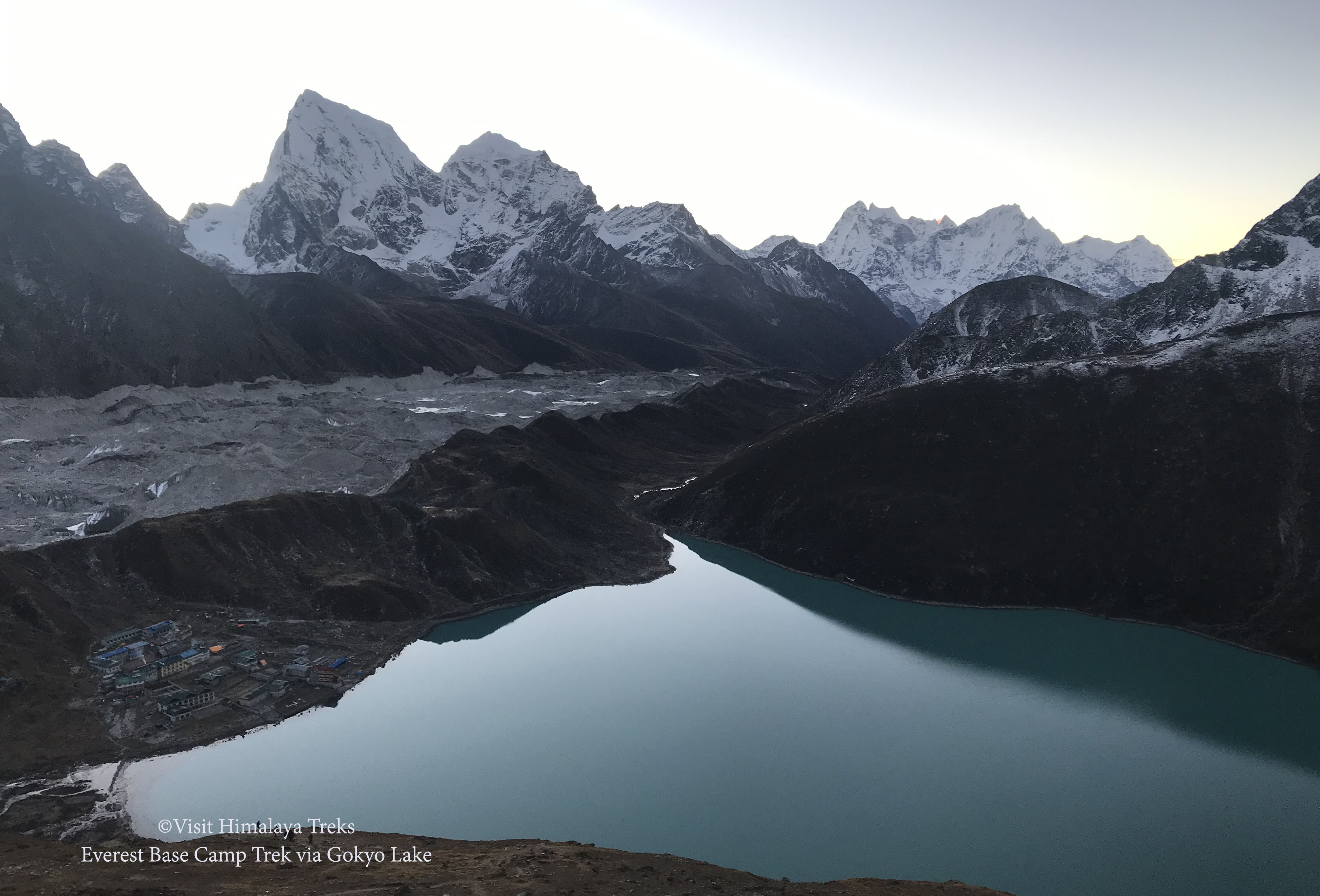
Gokyo Lake View.
Everest Base Camp Trek Via Gokyo Lake and Chola Pass.
The uniqueness of the Gokyo, a frozen lake adjacent to just the snowy giants, is unlike anything on the regular Everest Base Camp Trek route. Pair that with the unexpectedly exciting Cho La Pass (5,420m) and you have yourself a thrilling, less-frequented trail to the EBC Trek. The sites along this trail, from tranquil Dole with its forests draped with moss that open up into alpine meadows, to Machhermo with its yaks grazing under a starlit sky, are all truly magical.
The mountains calling from everywhere, as you stare out above the serene, milky, green-blue waters of the alpine Gokyo Lake, is super aesthetic. The reflection of Makalu and Lhotse in Gokyo Lakes makes it one of the best views to witness in the Everest region. Once you descend to Dzongla, you're back on the classic route at Lobuche, and an icy adventure over the Cho La Pass to start with. It moves on to Dzongla, Lobuche, and Gorakshep, following Base Camp and hiking to Kala Patthar. This unique route of EBC represents the Himalayan journey that unifies Sherpa hospitality, high passes, glacier valleys, and the remote beauty.
Take a challenge with the Everest Three High Pass Trek.
The Everest region presents you with a wide choice of adventurous treks, as nobody can overlook the Everest Three High Pass Trek. Doing the adventurous loop from the passes and reaching Base Camp is what a real thrill-seeker prefers. It is about crossing three of the mighty passes: Kongma La at 5,535m, Cho La at 5,420m, and Renjo La at 5,310m. Every pass that you cross gives you a different perspective of the mountains.
It marries up thrill with tire-popping icy ridges of a unique three-pass trek through Nepal’s wildest glacial terrains, one that will take you to hidden monasteries, frozen lakes, remote valleys, and a world-class mountain view of Mount Everest, Makalu, Lhotse, and Cho Oyu. Trekking through less-traveled villages where local culture remains pure, sleeping under stars, and climbing up to ice-covered ridges will make your heart race. This trek is not about being one among the rest, but the special lot who took the chance and came back with memories etched in snow and rock for a lifetime.
Trek to EBC and fly back By Helicopter from Gorakshep.
The helicopter ride is what you need after the Legendary EBC Trek. If you are looking for the complete Everest trekking experience but only want to fly out and skip the same walk back, then this is the perfect option for you. The route will be the same as of regular EBC trek. The trail passes through the Sherpa settlements of Phakding, Namche Bazaar, Tengboche, and Dingboche.
After you get to Everest Base Camp and Kala Patthar for the amazing sunrise panoramic view of the Himalayas, expect to catch a Helicopter back to Lukla or Kathmandu starting from Gorakshep. See a bird's-eye view of glaciers, rivers, forests, and villages. This will be a very different and vivid way to observe the beauty of the Everest region. This trek is perfect for people with limited time or who are looking for a luxurious return after their hard work pays off.
Touch the Sherpa town of Namche Bazaar.
Namche Bazaar is the lively center of Sherpa culture and the main trading hub in the Everest region. An essential acclimatization halt on the EBC trek, this historic mountain town is a buyer and seller of cultural gems in the lap of the sweeping Himalayas. Namche has multiple day hike opportunities up to the Everest View Hotel, Khunde, and Khumbila Ridge. Sherpa museum houses precious mountaineering & Buddhist artefacts. Potato fields & vegetable gardens occupy even the steepest hills, while yaks support the import and export industry.
Monjo Village, just nearby, openly accepts trekkers starting on their walk in the Sagarmatha National Park. The perfect mix of tradition and trade, spiritualism and survival is found in Namche. It’s where tales from the Himalayas come alive and is an official gateway to the Everest region.
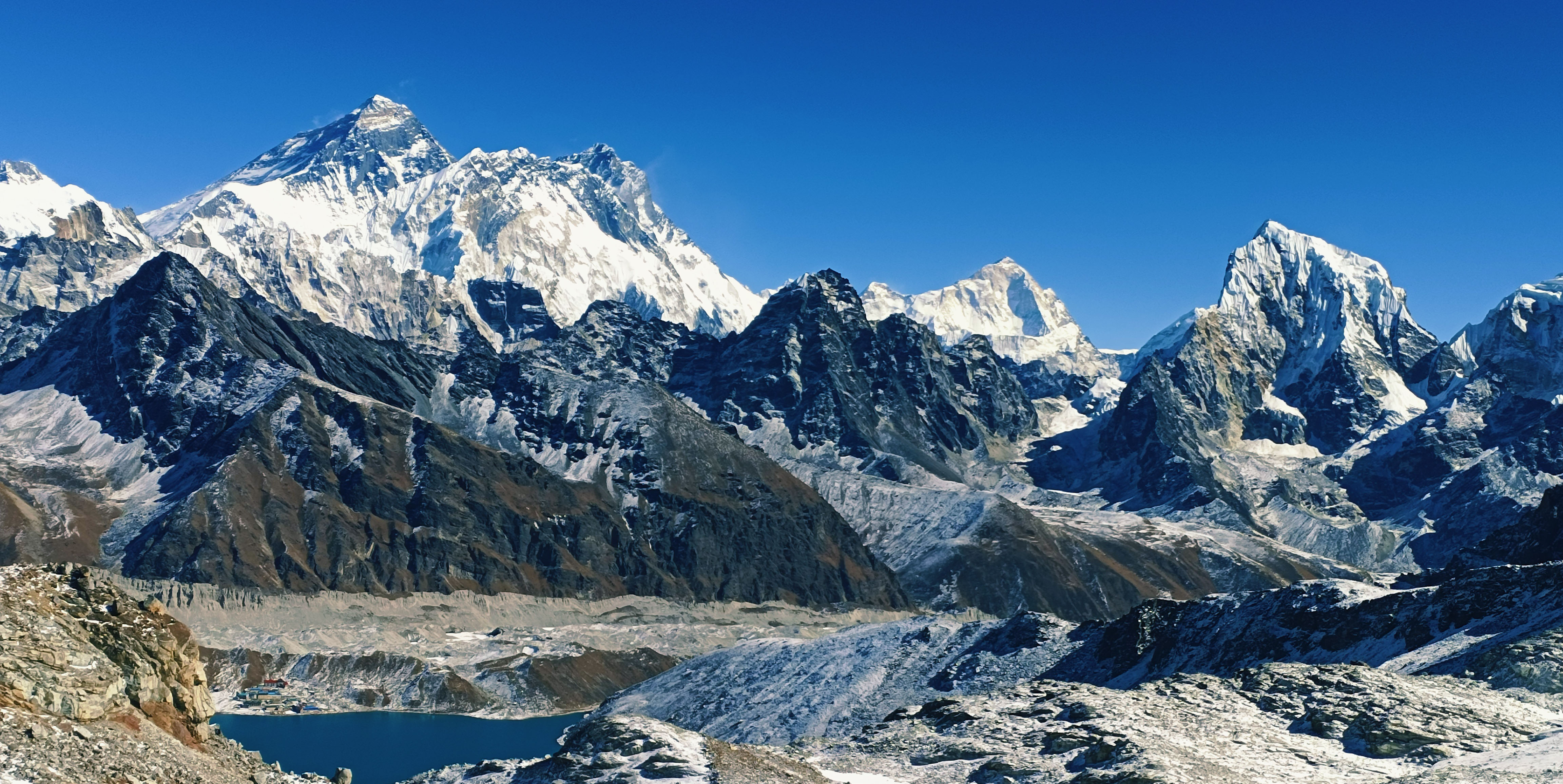
Gokyo Lake, Everest and Makalu view from Renjo La Pass.
Best Season for EBC Trek.
The EBC Trek is likely best to embark on during Spring or Autumn, but is open year-round with some precautions. The trail will be snow-covered in the Winter, but alive with flora during Summer. It is a different look of the Himalaya in every season when you have the right gear and strategy.
Autumn Season.
The best time for the Everest Base Camp Trek is in autumn, from mid-September to December. The weather is most stable with clear skies, sharp mountain air, and low odds of precipitation. Dry, clean days come with the westerlies wind, and Everest, Lhotse, and Ama Dablam sharply cut the sky. The region shines in autumn colours under golden light, deep blue skies, and lush vegetation. Dashain and Tihar time add cultural charm, and the clearest mountains in Nepal all year make this season pretty amazing for the EBC Trek.
Spring Season.
The magnetic period would be spring from March to May, for the EBC Trek. Weather remains cool with mild temperatures, clear mornings and light breezes. Trails follow the blooming rhododendrons, wildflowers and verdant vegetation, showing all freshness in the air with often deep blue sky and magnificent visibility of mountains like Everest, Nuptse, Makalu, etc. While it might have fewer trekkers than autumn, you can enjoy the peaceful trek to the high Himalaya in a colourful environment.
Winter Season.
The EBC Trek turns into a winter wonderland from December to February. You’ll find many fewer people there, and the whole place is like a sanctuary in the Himalayas. Get ready for cold, brisk air and brilliant scenes of silver peaks. On taking the fresh snow trials to places like Namche, Tengboche and Dingboche the photographic opportunities are magical if you’re wearing the right winter walking outfit. So, this will be a season of the Everest region with the least activities, but possible to carry out an adventurous snowy trek.
Summer / Monsoon Season.
Monsoon winds from the Bay of Bengal dominate the summer season from June to August. The eastern winds collide in the Everest region, bringing heavy rain on the routes. While one has to be careful of landslides and floods, you'll see everywhere turning into green, full of the prophets of the mountains. Mystic vibes surround the hills with clouds, keeping the atmosphere refreshingly cool, but the views often get hidden in the clouds, making the Himalayas more amazing floating over clouds. This season is a time of complete solitude and peace in the soothing rain of the mountains, with proper preparation.
Everest Base Camp Trek Cost / Budget.
The EBC Trek costs range from $1500 to $2500., The cost range depends on which package and services you select. One can also add the side trips to the itinerary by adding a little more expense. Eating three meals a day, accommodation in teahouses, guide and porter services, flight services, permits like Sagarmatha National Park entry permits and Pasanglamu municipality entry fees, are typical inclusions in a trekking package. Not included are miscellaneous expenses like drinking water, $1 to $3 a bottle, occasionally hot showers, $2 to $5, charging your electronics, $2 to $5, and Wi-Fi, $3 to $5. And it doesn't cost much to get good travel insurance with high-altitude coverage, around $100 to $150. Tipping guides and porters will also cost you around $100 to $200, as well as snacks, extras like a sleeping bag or more gear, boost your expenses.
Conclusion.
If you are one of the chosen few who are lucky enough to hike up to the base of the highest mountain in the world, you will know true beauty. Standing there at the base of Everest and having beings like Lhotse, Nuptse, and Ama Dablam all around you just puts you in a surprise. You will find yourself wandering past colourful prayer flags, stone chortens, sacred monasteries, and emerging onto a quiet trail that relaxes you mentally.
The EBC Trek takes you through bustling Sherpa town, Tea houses & sunrise at Kala Patthar. This is the Best Trekking destination in Nepal that will make you feel more connected to both nature and yourself. From sipping steaming cups of tea in cozy teahouses to watching sunrises from Kala Patthar, every step of the way, you feel you are becoming one with nature and yourself. You go home with much more than just the pictures you took. The Everest Base Camp Trek will leave you feeling inspired, centered, and completely alive with the magic of the Himalayas.

